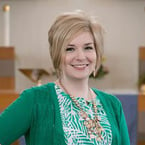Church services can sometimes be confusing for little ones. Why is it so quiet? Why does pastor wear that funny robe? Why do we say the same thing every week? Teaching young children about the individual parts of the church service can seem daunting. And it starts with learning yourself what it all means! This is the first of a series of posts on teaching our youngest churchgoers about the parts of service.
We thank God for the work that our pastors do for us. God uses them to turn us away from our sinful actions and to give us His forgiveness, love, and grace. God uses the pastor to care for the spiritual growth of His people. Pastors have a job that is very important: we call the pastor’s job the Office of the Ministry. What pastors wear can help us to understand their office.
Why does the pastor wear a clerical shirt and collar?
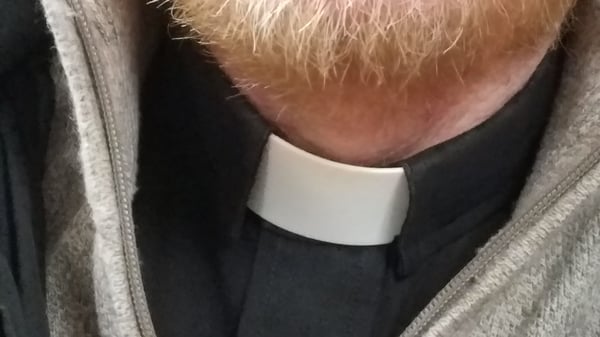
- Dark shirt: Typically, pastors wear a dark shirt called a clerical. It reminds the pastor and those who see him that he is a sinner who needs Jesus too—just like everyone else.
- White square: The clerical collar that he wears on his shirt shows a little square of white right over his throat, where his voice comes from. This shows that the words he shares are not his own sinful, human words, but the words of God from the Bible: clean and pure.
Why does the pastor wear an alb and stole?
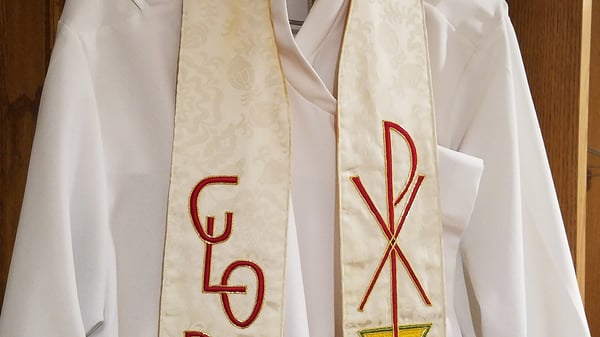
- White robe: When the pastor puts the white robe over his black shirt, it symbolizes that his sin is covered by the pure glory of God. The robe, which is called an alb, covers up the man so that we think about God’s work when we see our pastor. It covers the black sin and shows the mercy and grace of Jesus. Elders and acolytes might wear white robes when they help out in the service too. This helps us not to focus on the people themselves but the gifts of salvation and righteousness that God gives us all.
- Colorful cloth: The colored band of cloth a pastor wears around his shoulders is called a stole. It is usually the same color as the altar cloth and paraments in the church as the Church Year changes. Wearing this marks the role of the pastor as distinct from the other people who may help serve communion or assist with the service. You can ask your pastor about the pictures that may be embroidered on his stole. Those pictures remind us of stories in the Bible and God’s promises to us.
Why does the pastor wear a chasuble?
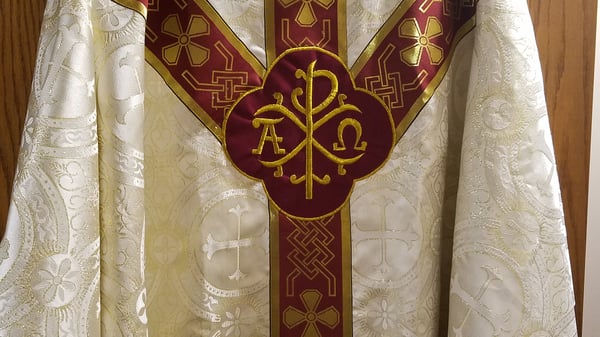
- Embroidered covering: Some pastors may wear another layer over their robe with beautiful patterns and symbols. This is called a chasuble. It is a further covering of the man to distinguish the Office of Ministry. The job of the pastor is bigger than he is—God does so much through the pastor. The chasuble further decorates the pastor’s vestments as a symbol of Christ’s glory.
The special things the pastor wears make up his uniform. Just like a firefighter’s uniform lets people know they can go to a firefighter for safety, a pastor’s clothing lets people know right away what his job is. No matter which pastor is wearing the uniform, all LCMS pastors share the same true words of God. We can go to them to hear the comfort of our Lord.
When it comes to teaching our little ones about being in church, it can be hard to know how to explain all that’s going on. I pray that this is a helpful guide as you teach your young children about the service.
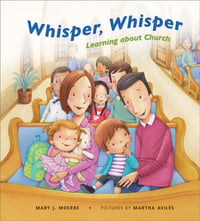 Whisper, Whisper: Learning About Church has rhyming text, in-sanctuary tips, and engaging, colorful illustrations help children understand the rituals and routine at church.
Whisper, Whisper: Learning About Church has rhyming text, in-sanctuary tips, and engaging, colorful illustrations help children understand the rituals and routine at church.



